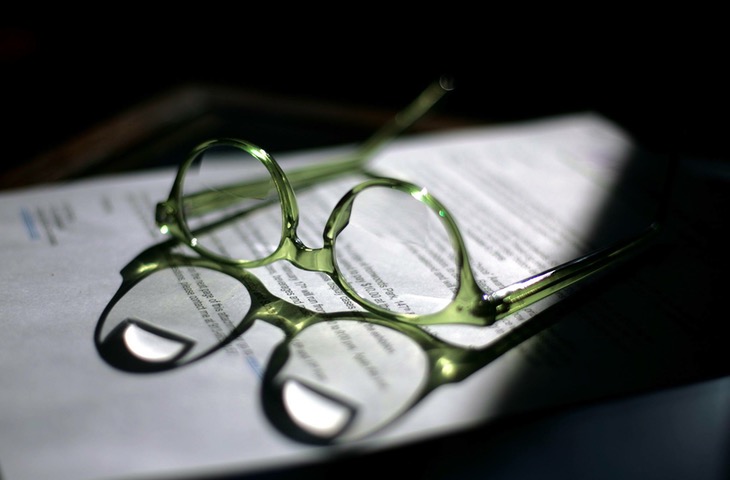
Myopia no longer means new glasses year after year. Myopia control is a groundbreaking new therapy that can help slow the progression of nearsightedness..
Until very recently, there has been little scientifically proven method for reducing the progression of myopia. Now researches conducted internationally have shown that light rays entering the eye focusing on the retinal periphery have a strong tendency to signal the eyes to grow longer (that is to become more nearsighted). Researchers have been looking at options for altering this peripheral de-focus in order to control or slow down the progression of myopia. As a result, there are now several different methods available for myopia control therapy.
Common Questions
Common Questions
What Is Myopia Control?
Although an outright cure for nearsightedness has not been discovered, the eye doctors at 20/20 Optometry can now offer a number of treatments that may be able to slow the progression of myopia.
These treatments can induce changes in the structure and focusing of the eye to reduce stress and fatigue associated with the development and progression of nearsightedness.
Why should you be interested in myopia control? Because slowing the progression of myopia may keep your child from developing high levels of nearsightedness that require thick, corrective eyeglasses and have been associated with serious eye problems later in life, such as early cataracts or even a detached retina.
Currently, four types of treatment are showing promise for controlling myopia:
- Atropine eye drops
- Multifocal contact lenses
- Orthokeratology ("ortho-k”)
- Multifocal eyeglasses
- MiSight 1 day soft contact lenses
Here's a summary of each of these treatments and of recent myopia control research:
Atropine Eye Drops
Atropine has been found in several studies to reduce the progression of myopia, meaning that students who were given the drug did not become as myopic as those students without the medication. A person with atropine in their eye will generally be very sensitive to light because the larger pupil allows approximately 20 times as much light to enter the eye and near work will become blurry. If the drops are used every day for myopia control, reading glasses, bifocals or removal of glasses (depending on the student’s vision prescription) will be necessary for any clear vision within arm’s length, such as desk work or reading. Atropine has been found in several studies to reduce the progression of myopia and have been used by doctors to reduce myopia progression by 90-100%! Due to the side effects atropine is rarely used, but we may use it in aggressive myopia cases.
Corneal Refractive Therapy (CRT) or Orthokeratology Therapy (Ortho-K)
Corneal refractive therapy (CRT) or Orthokeratology (Ortho-K) is a noninvasive way to combat the progression of myopia (nearsightedness) in children and adults. This technology allows the patient to wear the Ortho-k contact lenses to sleep and during the day have clear vision WITHOUT wearing glasses or contact lenses.
Soft contact lens
Multifocal contacts are special lenses that have different powers in different zones of the lens to correct near and distance vision (with or without astigmatism). There are several companies making these lenses, which have shown to reduce the rate of myopic progression by at least 30%. So far, our results indicated a positive outcome for our young patients. If you or your child has myopia, simply call our office today for an appointment to see if you can benefit from this therapeutic approach.
Spectacle lens
Multifocal glasses are lenses that correct for distance and near without a line on the lens. They have been tested for myopia control in children, but the results have not been as impressive than those produced with other types of myopia control.
Several studies published in the between 2000 and 2011 found that wearing multifocal eyeglasses did provide a small significant control in the progression of myopia in the first year.
MiSight 1 day soft contact lenses
MiSight 1 day contact lenses by Coopervision are the first ever contact lenses that are approved by the FDA to slow the progression of myopia (nearsightedness).
The MiSight 1 day lens is clinically proven to slow the progression of myopia when initally prescribed for children 8-12 yearos old. The MiSight 1 day contact lenses were clinically validated in a multi-year study. Over three years, the lenses reduced myopia progression by 59% compared to a single vision 1 day lens.
What else can help control myopia?
Outdoor Time (YES really!)
One of the big surprises of recent research is the importance of how increased time spent outdoors helps in preventing myopia. At the present time it appears that 14 hours a week or more outdoors are significantly effective in reducing myopia progression at early age.
How does increased outdoor time work for myopia control?
We don’t know. There are many possibilities and studies are under way to help determine what is happening.
What might be gained by outdoor activity?
Sun exposure with Vitamin D production (Vitamin D is produced by the skin with the aid of sunlight.)
Exposure to bright light releases chemicals in the retina such as dopamine that can control growth
Exposure to visual opportunities for far distance vision
Exposure to beneficial microorganisms
Unknown events that may be caused by being outdoors or that often happen to people who spend time outdoors.
“Outdoor activity” presents a complicated, broad area of research. An example of unexpected findings about outdoor activity is that exposure to the common soil bacterium Mycobacterium vaccae is believed to have anti-depressant qualities and has been shown to increase learning behavior. (News report link of American Society for Microbiology) It increased serotonin levels in the brain. Serotonin is part of the signaling system within the retina controlling eye growth. While no one has studied the possible connections to myopia control, the results indicate the complexity of trying to find exactly what outdoor time does to control myopia.
Detecting Myopia Early
The best way to take advantage of methods to control myopia is to detect nearsightedness early.
Even if your child is not complaining of vision problems (nearsighted kids often are excellent students and have no visual complaints when reading or doing other schoolwork), it's important to schedule routine eye exams for your children, starting before they enter preschool.
Early childhood eye exams are especially important if you or your spouse are nearsighted or your child's older siblings have myopia or other vision problems.
What About Myopia Control in Adults?
Myopia typically develops during the early school years and tends to progress more rapidly in pre-teens than in older teenagers. This is why myopia control studies usually involve relatively young children.
While it's true that myopia also can develop and progress in young adults, this is less common. And it's possible that an adult's eyes may not respond to myopia control treatments the same way a child's eyes do. For these reasons, it's likely that most research on controlling myopia progression will continue to focus on nearsighted children rather than adults.
Can Eye Exercises Cure Myopia?
You no doubt have seen or heard advertisements on television and the Internet that claim eye exercises can reverse myopia and correct your eyesight "naturally.”
Some of these eye exercise programs recommend you ask your eye doctor to write you an eyeglasses prescription that intentionally under-corrects your nearsightedness for full-time wear as an adjunct treatment to performing the exercises. The claim is that the exercises and undercorrection of your myopia will reduce your nearsightedness, so you will need less vision correction as time goes on.
It's worth noting here that research has shown undercorrection of myopia is ineffective at slowing myopia progression and may in fact increase the risk of nearsightedness getting worse. Also, intentionally undercorrection of myopia causes blurred distance vision, which may put your child at a disadvantage in the classroom or in sports and affect their safety.
